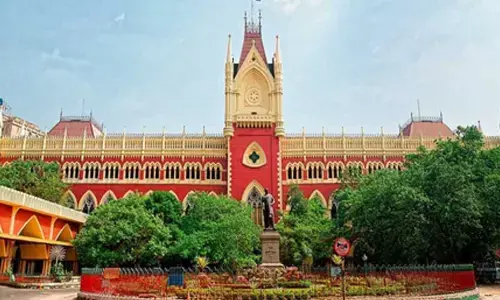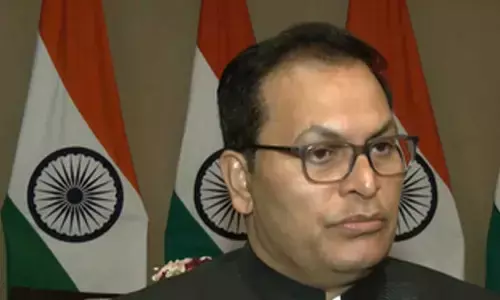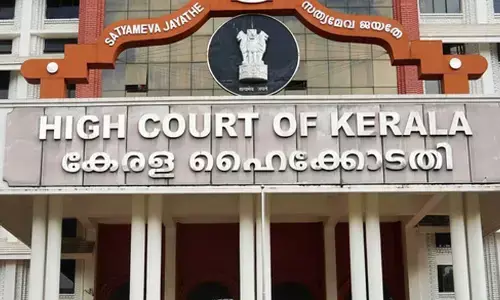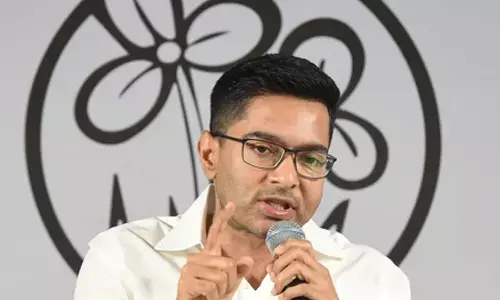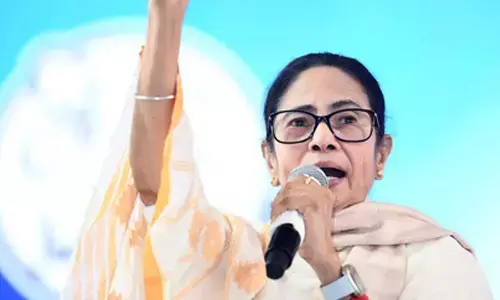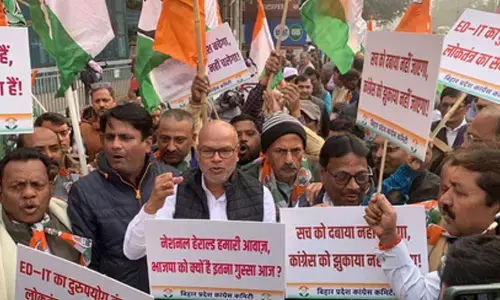Is privatizing primary education a national pursuit?

Is Privatizing Primary Education a National Pursuit?. There is a deliberate pursuit to privatize education even at primary level across our country. This is without any public debate or a policy, and despite it being against the spirit of Constitutional expectations and provisions of the Right to Education Act.
There is a deliberate pursuit to privatize education even at primary level across our country. This is without any public debate or a policy, and despite it being against the spirit of Constitutional expectations and provisions of the Right to Education Act. Even though it is obvious that private schools imply an economic burden for many households, deprives the poor from access to basic education and pushes primary education to the mercy of private schools - most of which are profit making ventures not covered under any regulatory norms.

Towards preparing the ground for privatization, Government schools and their standing is being defamed, very consistently. All this is ignoring the efforts put in and resource allocated over the decades for setting up of a huge network of public schools with infrastructure in nook and corner of the country as a development priority. There is no doubt that primary education is languishing on several counts, as study after study has brought out more recently. Instead of correcting the ills and restructuring the system, public schools are being condemned with convenient research findings on enrolment and quality criteria. This trend has now reached a high pitch in some states, as if public schools are on way out.
On critical analysis it comes out that many of the political leaders in the country have interests, directly or indirectly, in the business of private schools. Since many Government schools are on their own premises more often in prime locations, now those interested in real estate too have joined this bandwagon against public schools. On the other hand, no one seems bothered to explain the contradictions in the trends and extend much needed support for primary schools being the responsibility of the Government. Instead, Governments are trying to further diffuse the scene in the name of model schools, smart schools, gurukul schools, cluster schools and Kasturba schools, etc. under different management systems. Many schools are already under Sarva Siksha Abhyan scheme.
What are the core issues in this trend?
First, should we continue to offer primary education under two different streams and standards? One, languishing large network of public schools providing free schooling over the decades, but lacking today in finalities and linkages. A second type of mushrooming private schools, with frequent increase in tuition fees and without any norms and guidelines. Second, should we have a common curriculum with in each state or should private schools set their own? Third , regarding use of English at the primary level. Fourth, are we on right course for universal education pursuing free and compulsory enrolment? Fifth, should private schools be reimbursed with tuition fees for enrolling certain percent of children?
Nearly a thousand primary and upper primary schools are likely to be closed in the 13 districts of Andhra Pradesh on the criteria of enrolment of only ten or less students. The children from these schools being closed down may be accommodated in cluster schools proposed in these mandals for five kilometer radius. The State Education Minister announced to that effect without making a bid to increase enrollment in such schools. But on the other it was hinted that Government would pay to private schools Rs.6 to 10 thousand for each such child deprived of closing down of Government schools on joining private school. If State Governments start reimbursing 25 percent of children in private schools as being poor, it will be a death knell of public schools in primary education as well. That is the more public schools are closed, the better it is for private schools in more than one way. The Minister has not indicated what use the premises of the schools being closed down would be put to use. It also implies that no more recruitment of teachers. The Minister even hinted an Idea of floating schools under public-private mode. In more than half of schools (11000) in Telengana district’s enrolment last year was less than 40. In 4000 schools enrolment was with in 20. On the other, the number of private schools in these two States in the last decade has doubled and enrolment increased by 40 percent.
That there has been an overall decline in enrollment and outcomes both in the case of private and public is indicated in some reports. But the Government schools are being depicted relatively as inferior, as if by design! The comparison between private and public schools is not fair. Children who go to private schools are relatively from better off families, where at least one parent is educated and likely to give special attention to the child at home. And since a fees is paid, they tend to be more concerned and in that process take some interest, unlike in the case of parents of children in public schools. But, over all, there is ample evidence that children who had gone through public schools make as much or better difference in the society and in their careers.
A few months ago, an NCERT sponsored study on implementation of RTE Act among private schools in Punjab has indicated that Government has failed to ensure admission of poor children in private schools, despite their notification in 2010 that all children of 6 and 14 age should be given free and compulsory education at neighborhood private schools. Punjab Government however had de-recognized 12 percent of nearly 10,000 private schools for non compliance of RTE norms. There must be many more non recognized private schools, as in other States. This study has also reminded that there was no uniformity in curriculum of these private schools and that they do not have proper infrastructure, including student-teacher ratio. It further said that nearly half of teachers in these schools were under qualified or not trained at all and their salary level is less than the prescribed wages under Minimum Wage Act of 1948. Plus, there is no transparency in the functioning of private schools. The situation in many other States is no better and in some, it is even worse than in Punjab. Delhi High Court had asked Delhi Education Department last week not to pretend ignorance of increase in tuition fees of some private schools. A recent RTI reply revealed that private schools in Delhi lie about the money they get in the form of tuition fees by giving lower figures for admission numbers.
Private schools are two types. While corporate schools in cities showcase glitter and glamour and yet provide quality education at very high cost, bulk of schools particularly in villages are a misnomer of their names as they neither have minimum infrastructure nor follow any of the norms as brought out by the study in Punjab. A few private schools of course are run even idealistically. But most private schools are out to lure children from Government schools and mop up children by sending vehicles to doorstep in villages. In this process, many private schools are taking meritorious children from local Government schools to showcase better outcomes of their school in their big budget advertising. An impression has gone around that students from private schools with English, who wear boots and a tie, are more likely to get jobs. Some 25 lac students were reported to have shifted from public to private schools in the last decade in the combined Andhra Pradesh state.
Government schools in some states are trying to catch up by giving option of English. These schools in some districts are trying to gear up by taking to personalized coaching after school hours, explaining to parents unique facilities and opportunities their school offers by showcasing merit of group of local students. There are a number of public schools in a few districts that I visited in Telengana that have reversed the trend both in enrollment and outcomes as teachers took such local initiatives? In such situations private schools ofcourse are intensifying their promotional efforts.
Public schools are suffering on several counts despite much better offerings. First and foremost, the linkage of the school with village and parents need to be activated. Second, teacher vacancies are too many and their attendance reliability calls special attention. In Gujarat for example there are more than 25,000 vacancies in Government schools. In Andhra some 1500 Government schools have no teacher at all. Teachers should not be overburden with so many other activities that have nothing to do with education. Third, supply of school books, uniforms etc should be in time. The mid-day meal arrangement should be made attractive for all sections of local community. fourth, special attention to get back boys (more girls than boys are in public schools) to public schools is required may be with more outdoor and indoor activities by way of games, imparting communication skills, better and more interactive book reading and see that new technology is actually availed. Over and above, supervision and monitoring of school operations has to be far more effective.
I first wrote in March 2012 and again in May 2013 in Transparency Review about the trend towards privatization of primary education in the country and the moves of some State Governments to close down Government schools instead of taking initiatives for ensuring free and compulsory enrollment. Since the momentum has now gained neither political parties nor civil society leaders are coming out to express concern. Even news media are not raking this issues, other than few exceptions like Eenadu and Sakshi. It was a Telugu feature film Golkonda High School a couple of years ago that had brought out the menace of nexus of real estate lobby and politicians thriving in school business, trying to take over Government school by condemning public schools.
Private schools need to be brought under a uniform curriculum, ensured they have trained teachers and operate with basic infrastructure. Since Public schools alone will not be able to serve or meet the demand for compulsory education, private schools could take primary education without going against national concerns as in the case of free and compulsory enrolment and operate transparently. We need a more affirmative national policy on primary education as to our responsibilities for free and compulsory enrollment.
By Dr N Bhaskara Rao








